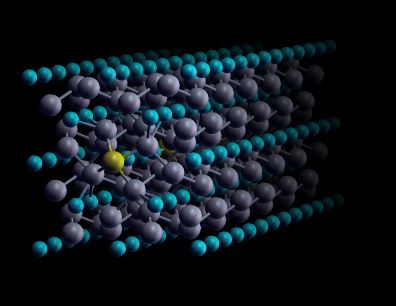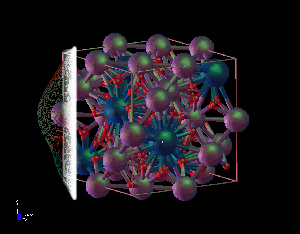COMPUTATIONAL MATERIALS RESEARCH
Methods:
– APW+lo (DFT)
– FP-LAPW (DFT)
– Car-Parrinello molecular dynamics
– APW+lo (DFT)
– FP-LAPW (DFT)
– Car-Parrinello molecular dynamics
– Pseudo-potential method (PAW)
Research topics:
TDPAC experiments are complemented by computations performed on the investigated materials. Hyperfine parameters, i.e. electric field gradients and hyperfine magnetic fields are calculated in various compounds in order to elucidate the role of the TDPAC probes, 181Ta and 111Cd. Investigation of hyperfine structure of nuclei can explain the interactions of the atomic nucleus with local electric fields, by which knowledge of symmetry of charge distribution around nucleus, electronic configurations of atoms and peculiarities of atomic structure of solids could be induced. More…
Electronic structure calculations of bulk hydrides and metal surfaces are performed with idea to better understand hydrogen-metal interactions, as a part of research aimed at finding new hydrogen storage materials. More…
Today’s biggest challenge in the field of renewable energy is undoubtedly the solar energy conversion and storage. Photoelectrolysis of water using solar light could be the most efficient and environmentally friendly way of producing sustainable H2 gas. In order to achieve it, a photo-semiconductor capable of absorbing solar energy efficiently is needed. Efficient photocatalysts should satisfy several conditions: More…

 Hydrogen in intermetallics
Hydrogen in intermetallics